The best-case scenario for the Montreal Canadiens is clear with regard to No. 1 center Phillip Danault. Ideally, Danault will stay on past next season, when his contract expires, but what if he decides to move on, a distinct possibility at which he recently hinted? The Habs need to brace themselves in such an instance.
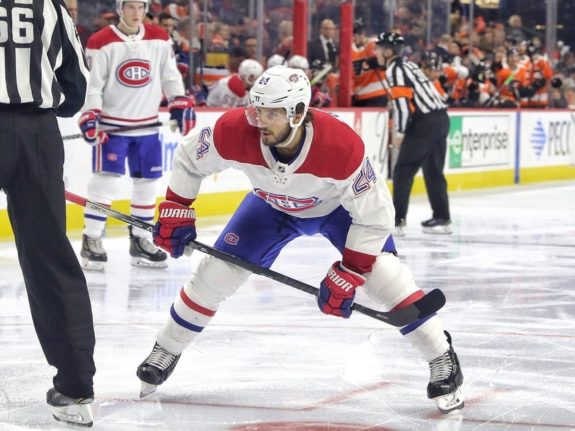
Danault definitely has the right to pursue other options if he wishes to continue to play an offensive role on the team. However, if it gets to the point where either one or both of Nick Suzuki and Jesperi Kotkaniemi usurp him on the depth chart, it can only mean good things for the team as a whole. Thankfully, there are projected to be alternative third-line-center options on the open market come 2021. Here are the top five:
5. Eric Staal
There were days when the mere thought of Eric Staal in a Habs uniform would have been enough to get fans ready to send the farm packing. They’re long gone alongside the seasons in which he could net a point per game. He still netted a respectable 47 points in 2019-20, the same as Danault, just in less ice time.
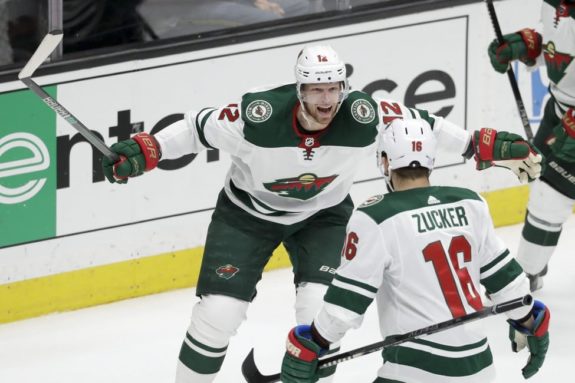
That’s kind of the point, though. Danault’s in his prime. Staal is exiting his. If his career up to now is any indication, Danault won’t ever hit the top 10 in scoring. Neither will Staal again, but he can still chip in offensively. By the time he hits free agency at age 36, his contract demands might be around his current bargain-basement $3.25 million cap hit.
It’s Staal’s second contract with the Minnesota Wild, with whom he enjoyed a career resurgence. If the Habs are willing to take a chance he’s got some hockey left in him, he might be worth it, as long as they’re willing to sacrifice Danault’s defense for the ability to roll four lines. Staal isn’t your prototypical third-line center, but he can still be useful in a middle-six role. In theory.
4. Travis Zajac
Admittedly, New Jersey Devils center Travis Zajac would be a downgrade relative to Danault in several ways. Whereas Danault will be just 28 at this time next year, Zajac will be 36, like Staal. His career is undeniably winding down and his offensive production can’t realistically be expected to stay where it is at around 40 points per season.
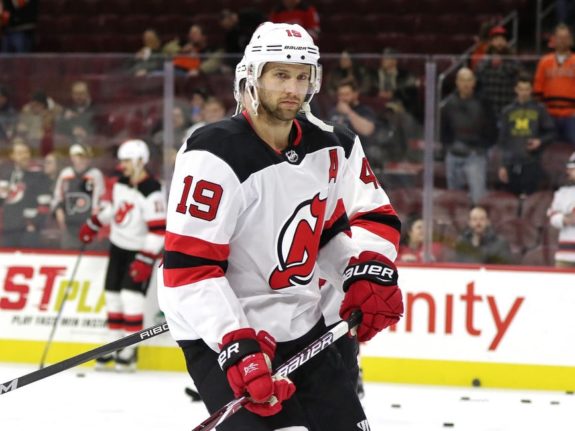
However, Danault is poised to strike it rich on his next deal. Zajac would conceivably be facing a pay cut from the $5.75 million on average he makes right now. Taking into account his renowned prowess in the defensive zone and in the faceoff circle (54.0%), Zajac would project as more of a traditional third line center than Danault.
3. Derek Ryan
Derek Ryan continues to surprise as one of the most underrated depth players in the game. When he signed his current three-year, $9.375 million deal with the Flames, almost everyone believed it to be an overpay. After all, Ryan was over 30 despite being a veteran of just two complete NHL seasons, having just scored an impressive 38 points with the Carolina Hurricanes. By all superficial appearances, he was a flash in the pan.

Then Ryan went out and scored the exact same number of points with the Flames the following season. This past season, he was on pace for around that same (35) before the hiatus. Needless to say, it wasn’t luck, but rather hard work to get to this point in his career.
Come next offseason, Ryan will be 34. Considering his current $3.125 million cap hit and his trademark consistency in terms of production (and effort level) up to now, he could very well be a worthwhile stop-gap measure for the Habs to consider.
2. Casey Cizikas
Yes, Casey Cizikas is a fourth-liner. However, he’s the center on arguably the top fourth line in the league, between Cal Clutterbuck and Matt Martin. There’s little reason why Cizikas shouldn’t be able to pivot a third line instead, which is far from a foreign concept to the Islanders fans. It’s an idea that been bounced around before. Then the Isles went and signed Derick Brassard, ultimately trading for Jean-Gabriel Pageau to serve as the team’s third-line center instead.
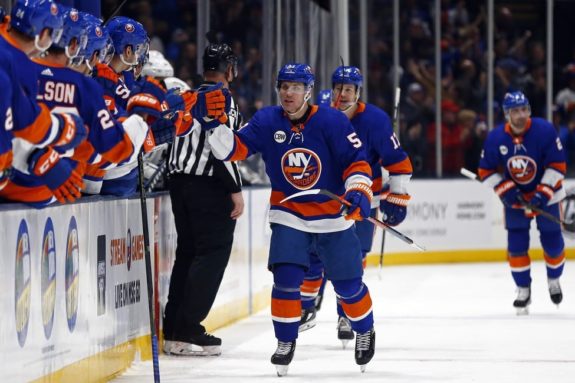
While the Islanders and Cizikas may be happy with the current arrangement, there is nevertheless a ceiling above him preventing from moving up in the lineup. Free agency would present him with the opportunity to do just that, potentially on the Habs, who admittedly might lose some overall offense if he were to in fact replace Danault. However, Cizikas, 29, is far from a slouch in that department.
Cizikas’ current five-year, $16.75 million deal was seen as crazy when it was signed in 2016. He then exploded for a career-high 20 goals in 2018-19. True, it could have been a one-off, but in actuality he wasn’t far off that pace this past year with 10 goals in 48 games. With more ice time than the ~14 minutes he gets right now (compared to Danault’s ~18), maybe he can contribute more in line with what one would expect from an elite No. 3 center.
1. Blake Coleman
Based on his six points these playoffs with the Tampa Bay Lightning alone, Blake Coleman is due for a significant raise when he becomes a free agent alongside Danault in 2021. He’ll likely be worth it, arguably to a greater extent than Danault will end up being worth his inevitable pay bump.
Coleman makes a mere $1.8 million right now. So, it’s entirely conceivable he could end up with less than Danault on their next contracts ($3.083 million cap hit). Considering Coleman is a proven 20 goal-threat (with two-way, penalty-killing acumen), such a hypothetical signing would be a major coup for Habs general manager Marc Bergevin.
Coleman has emerged as an elite defensive center, who has the versatility to play all three forward positions. His value is such that the Lightning traded a top prospect and a first-round pick to acquire him for just two seasons. The one downside is his career-high 46.9% faceoff percentage (2017-18). There’s just no comparison to Danault whose worst rating over his four-plus seasons with the Habs is 51.7% (2016-17; 54.5% this past season).
It goes to show that, even though Coleman may be the sexiest option to take over for Danault, there’s no completely replacing the man who finished seventh in Frank J. Selke Trophy voting in 2018-19.
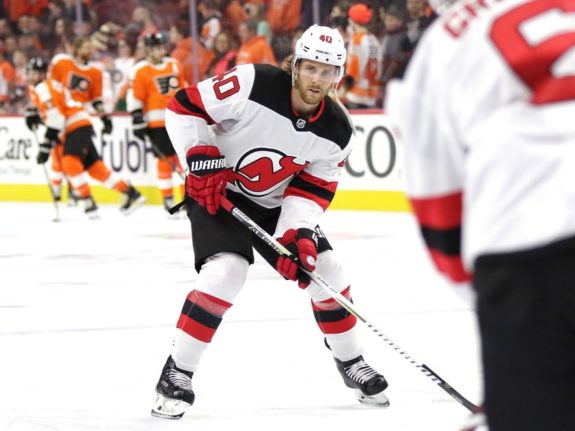
Bar none, Danault is the most complete player named in this piece, based on his age, two-way game and presence in the faceoff circle. However, none of that can come in the way of how the Canadiens only become legitimate playoff threats and then contenders if the investments they’ve made in Suzuki and Kotkaniemi pay off.
The Habs absolutely need Suzuki and Kotkaniemi to pan out and develop into their top centers. As great as Danault’s two-way game is, his offensive ceiling pales in comparison to what’s expected of the former two. It makes little sense to deploy Danault ahead of both them if they each realize their potential. In sharp contrast, Danault projects as an elite No. 3 on a contender. The Habs can be that contender in just a few short years if a lot goes right, including Danault re-signing when the time comes, but only to play that specific role.
That’s the best-case scenario for the Canadiens, here. The worst isn’t Danault leaving, though. It’s Danault still being the No. 1 center five years down the road. Re-signing him in that hope would kind of defeat the purpose.